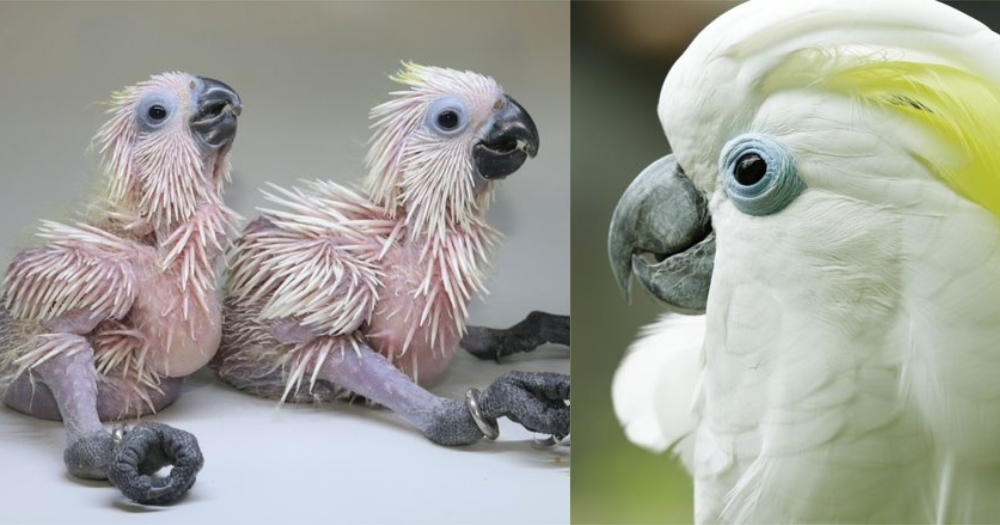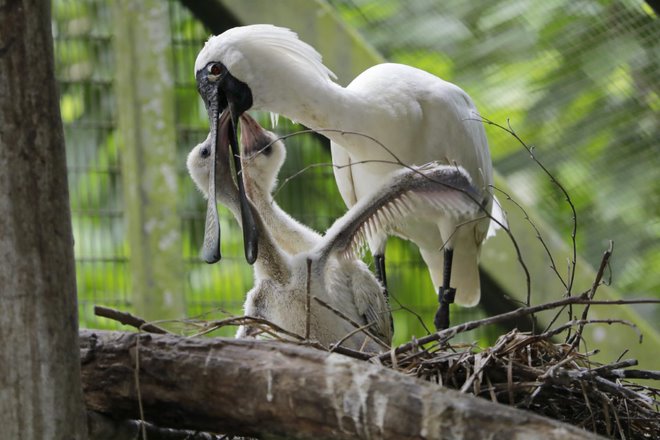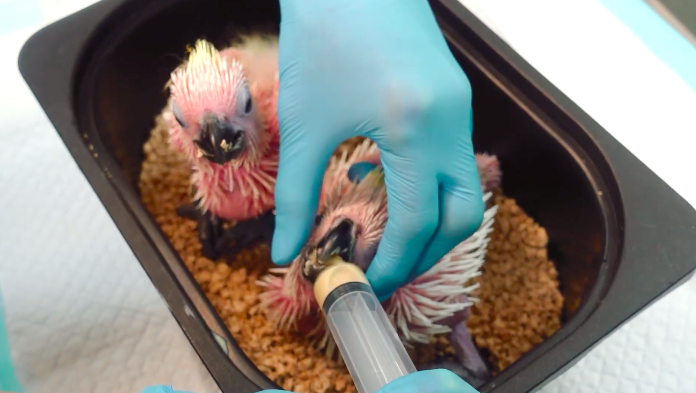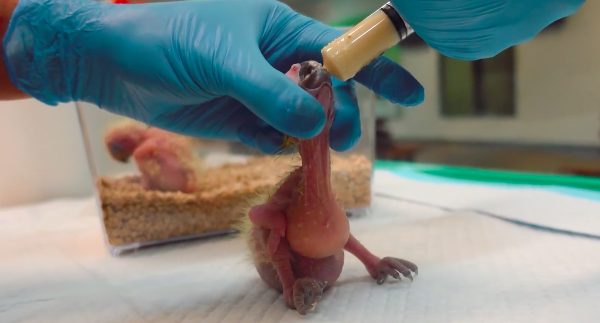Jurong Bird Park (JBP) has reopened on July 6, 2020 after three months of closure in light of the Covid-19 pandemic.
Since the beginning of 2020, over 100 chicks — a fifth from threatened species — have been hatched at Jurong Bird Park (JBP).
They include a pair of critically endangered red-fronted macaws, three endangered white cockatoos and three blue-eyed cockatoos.
JBP said in a release that these species are threatened in the wild and are very rare in zoological parks.
Endangered
 36 day old and an adult white cockatoo. Photo via Wildlife Reserves Singapore
36 day old and an adult white cockatoo. Photo via Wildlife Reserves Singapore
White cockatoos face severe threats from poaching and is listed as endangered in the International Union for Conservation of Nature (IUCN)'s Red List of Endangered Species.
 25 days old and an adult blue-eyed cockatoos. Photo via Wildlife Reserves Singapore
25 days old and an adult blue-eyed cockatoos. Photo via Wildlife Reserves Singapore
The blue-eyed cockatoo is also a vulnerable species listed in IUCN's Red List.
The two red-fronted macaws are also the first such hatchlings born in five years at JBP. It is estimated that there are fewer than 275 mature red-fronted macaws in their native Bolivia.
Thus, the red-fronted macaws are considered to be critically endangered by the IUCN.
 Parent black-faced spoonbill feeding its chicks. Photo via Wildlife Reserves Singapore
Parent black-faced spoonbill feeding its chicks. Photo via Wildlife Reserves Singapore
Dr Luis Neves, Director of Zoology at Wildlife Reserves Singapore (WRS) said that "as the numbers in the wild dwindle, each hatchling holds great significance for conservation. Breeding them successfully under human care takes us one step closer to the eventual goal of repopulating wild habitats.”
The other hatchlings include three black-faced spoonbills, eight yellow-backed chattering lory chicks and a western long-tailed hornbill.
 40 days old and an adult yellow-backed chattering lory. Photo via Wildlife Reserves Singapore
40 days old and an adult yellow-backed chattering lory. Photo via Wildlife Reserves Singapore
Hand-raised
To maximise their survival, the chicks are being hand-raised at JBP's Breeding and Research Centre. Caretakers feed the chick at regular intervals and weigh them to track their progress.
 Photo via Wildlife Reserves Singapore on Facebook
Photo via Wildlife Reserves Singapore on Facebook
JBP revealed that smaller species such as pigeons and passerines (perching birds such as songbirds) require this special care for six to eight weeks, while it may take up to eight months for larger species such as macaws.
 Photo via Wildlife Reserves Singapore on Facebook
Photo via Wildlife Reserves Singapore on Facebook
Mark Rusli, a hand rearer at JBP said:
“Hand-raising chicks can be challenging. They are delicate when young and have a demanding feeding schedule where they have to be fed up to seven times a day. But it is very rewarding to see the chicks grow and eventually fledge. It gives us even more fulfilment knowing that we have directly contributed to the continued survival of these threatened species."
Once the birds are old enough, they will be moved to their respective aviaries.
Related article:
Top photo via Wildlife Reserves Singapore
If you like what you read, follow us on Facebook, Instagram, Twitter and Telegram to get the latest updates.
